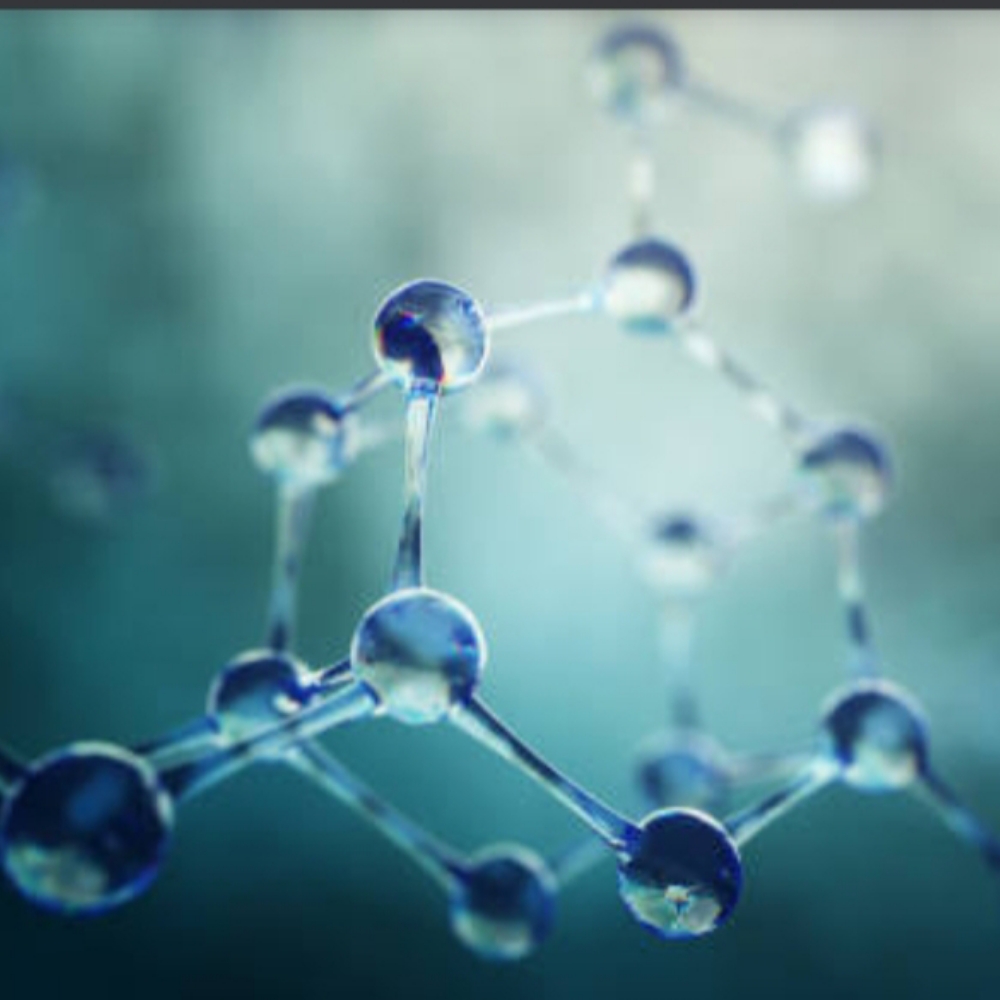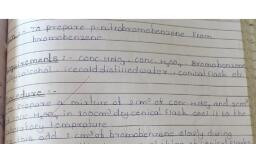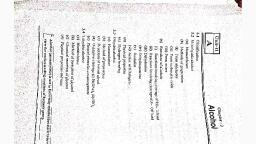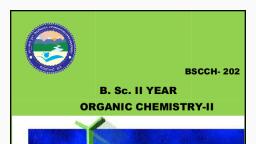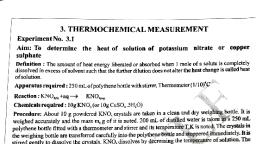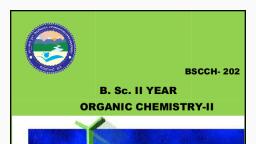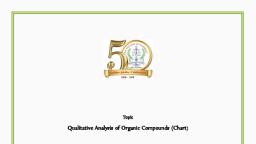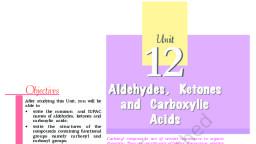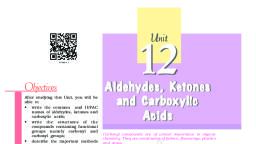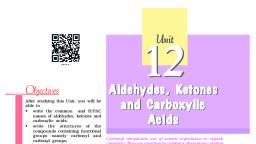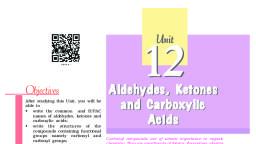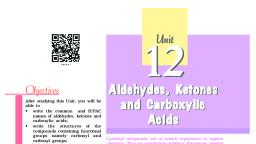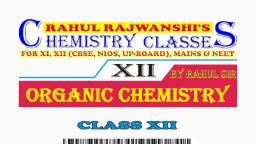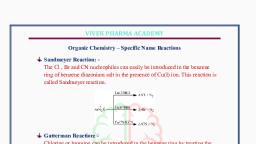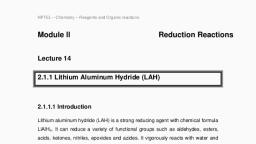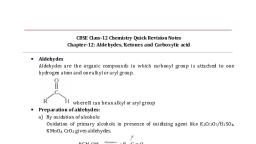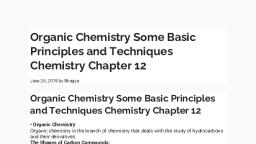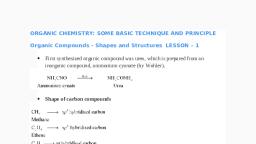Page 2 :
Systematic analysis and identification of Organic Compounds, In Qualitative analysis the given mixture is analyzed for functional groups that it contains., Depending upon the quantity of sample used it is classified as, Macro Analysis -, 0.1 - 1g, --------, Semi-micro Analysis, 10 - 100 mg, Micro Analysis ------- 1- 10 mg, The analysis of the given organic compound is carried out in the order., I. Preliminary tests., Determination of physical constant (boiling point or melting point), II., III., Detection of elements (nitrogen, sulphur and halogens)., IV., Solubility test., V., Characteristic reactions of the functional group., VI., Preparation of suitable solid derivative., VII., Report, I. PRELIMINARY TESTS:, Test, Observation, Inference, a) Physical State, b) Color, Solid/Liquid, Hydrocarbons, Carbohydrates,, Alcohols, Phenols, Aldehydes,, Ketones, acids, esters, Nitro compounds, p-Nitroso compounds, Nitroamines, azocompounds,, Napthaquinones, Esters, colorless, Yellow, Greenish yellow, Reddish orange, c), Odor, Pleasant -fruity, Benzaldehyde, nitrobenzene,, benzonitrile, Bitter almond odor, Odor of carbolic soap, Phenols, Cresols, Lower acids, aldehydes, acid, halides, Pungent or irritating, Aliphatic amines, side chain, aromatic amines, Fishy odor, Sweet odor, Chloroform, alcohols, Vinegar like, Cinnamon like, Acetic acid, Cinnamaldehyde, d) Ignition test:, Heat the organic compound, on a spatula over a low, flame,, Aromatic compounds, Aliphatic compounds, Urea, Thiourea, Carbohydrates, tartarates,, Citrates, Burns with a sooty flame, Burns without sooty flame, raising, the, Ammoniacal odour, temperature, gradually, Charing with the smell of, burnt sugar, Page 3 of 32, Scanned By KagazScanner, Scanned By KagazScanner
Page 3 :
(Test for unsaturation), A)Baeyer's test:, A pinch or a drop of the, organic compound + about, one cm of 5% Sodium, carbonate, е), Pink color discharged without, brown precipitate, Pink color discharged with, brown precipitate, Unsaturated compound, solution, +one, Or, Saturated compound, KMNO4, drop, solution, of, 1%, No decolorisation, KMNO, brown, Mno, (+), sludge, KMno,, + Mno,, (-), B) Bromine water test:, A pinch or a drop of the, organic compound + Br2, Decolorization of Br2 water, Unsaturated compound, water, C) Bromine in CCI4 test:, Dissolve a pinch or a drop, of the organic compound in, about 2 ml of CCI4, add 2%, solution of Br2 in CCl4, Decolorization without, Unsaturated compound, evolution of HBr, Decolorization with evolution, of HBr, Saturated compound, Add, alkane or, alkene, Br, water, Alkane, Alkene, H., Br, Br, Br, Ethylene, Bromine, 1,2-Dibromoethane, (coloriess), (brownish-red), Page 4 of 32, Scanned By KagazScanner, Scanned By KagazScanner
Page 4 :
Beilstein's test:, A copper wire is ignited in non, luminous flame till it does not, f), The given compound may be, special amide, Or, impart green color. Then it is, plunged into the given organic, compound and again ignited., Green edged flame, The given compound contains, halogen., Cu +, O2, 2 Cuo +, 4R-X, 2CuX2, 2CuX,, Blue-Gree Light, g), Litmus test:, Substance (if liquid) or the solution of the substance in neutral aq. alcohol + moist litmus paper, i)Blue litmus turns red, Acidic compounds(carboxylic acids, phenols), ii)Red litmus turns blue, iii)No change of color, Basic compounds(amines), Neutral compounds, II., DETERMINATION OF PHYSICAL CONSTANT: (BOILING POINT OR, MELTING POINT), If the given compound is a solid determine the melting point is determined, if it is a liquid, determine its boiling point is determined., Note: Since the boiling point decreases by one degree for every 1000 feet altitude above, the sea level;, Corrected boiling point = observed boiling point +/- 3 % correction, Physical constant, Melting point:, Boiling point:, Observed boiling point, 3% corection, Corrected boiling point, °C, °C, °C, III., DETECTION OF, ELEMENTS, BY, SODIUM, FUSION, TEST, OR, LASSAIGNE'S TEST (NITROGEN, SULPHUR AND HALOGENS):, In order to detect the elements in organic compounds, it is necessary to convert them into, zable inorganic substances so that the ionic tests, applied., This conversion may be accomplished by several methods, but the best procedure is to fuse, the organic compound with metallic sodium (Lassaigne's test)., inorganic qualitative analysis may be, Lassaigne's test consists of, (a) Preparation of Sodium fusion extract, (b) Test for elements(Nitrogen, Sulphur or halogen), Page 5 of 32, T...l.. :.. it., T.. I......., Scanned By KagazScanner, Scanned By KagazScanner
Page 5 :
(a), Preparation of Sodium fusion extract:, Take a small piece of clean dry sodium (approx.50-75 mg) in a clean dry ignition tube. Heat, the tube slowly just to melt the Sodium into a silvery globule. Remove it from the flame and, add the compound (20-25 mg or a drop).First heat on a low flame and then on a stronger, flame until it becomes red hot. Keep it in the red hot condition for 1-2 minutes (until the, compound completely reacted) and then plunge into 10-15 ml of distilled water kept in a, porcelain basin. Boil the contents of the porcelain basin for 2-3 minutes and filter .This, filtrate is called Sodium fusion extract or stock solution .The filtrate, the Lassaigne's extract,, is used for testing the extra elements., Test tube, holder, Sodium +, compound, (1) Heat sodium and aub-, stance till all fumes, cense to be evolved., (2) Plunge ignition tube, in 10-15 ml diatilled, water., Lassaigne's, extract, (3) Boil the eontenta, for five minutea., (4) Filter the extrect, while still hot., Note: The filtrate should be colorless. Repeat the experiment if the filtrate is not colorless., Na +C + N NaCN, 2Na+S Na2S, Na + X -NaX (X= Cl , Br, I), Na+ C+ N+S NASCN, Precautions:, 1. Do not touch Sodium with your fingers; handle it with forceps., 2. There may be a slight explosion with compounds like nitroalkanes , azides, diazonium, salts, chloroform and carbon tetrachloride.(safety goggles should be worn to avoid getting, hurt by accidents)., Page 6 of 32, Scanned By KagazScanner, Scanned By KagazScanner
